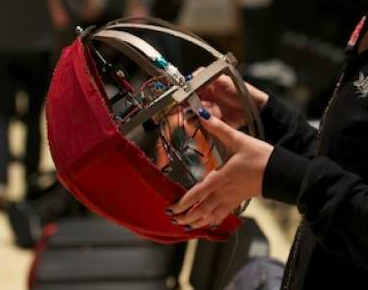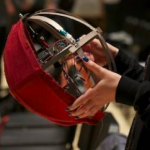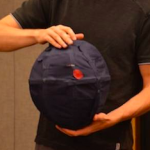Description:
Our research intends to design a Digital Musical Instrument (DMI) which creates inherently site-specific sound, i.e., it enables space to be integrated in the composition of the sound in real-time. Thus, performance space becomes a parameter of the compositional work. The DMI we are developing is called Intonaspacio, an homage to Intanorumori, the set of musical instruments designed by Luigi Russolo in the beginning of the XXth century.
Site-specific art understands space as an important feature for the creation of the work of art. The space, the performance space, is the frame of the work, and it is related to it not only through the subject of the work but also through its physical characteristics. Therefore, there is a two way path between the performance space and the work of art in which:
-
The performance space shapes the way we perceive the work of art
-
The work of art, through its physical characteristics models the response of the performance space to it.
These phenomena results in a triad in which the work is completed. This triad is formed by the work of art, the performance space and the viewer. And without these three characters, one can not have access to the full meaning of the work. In our work we purpose different actors for these triad, since we focus our research in the field of sound. We believe that the three elements necessary for an inherently site-specific sound work are the sound work itself, the performance space and the performer. Although in this situation, we need to have a mediator between these elements, this mediator gives the performer the control over space to create the sound work. The mediator of these agents is Intonaspacio.
Intonaspacio enables the integration of space as a composition parameter. It allows the performer to record the ambient sound of the room, including the noises produced by the audience, the instruments from other performers and the resonance modes of the room. Intonaspacio has the shape of a ball, built with a set of arc connected to each other in two points (top and bottom of the sphere). Additionally it has in its structure a set of different sensors that allow the performer to modulate the sound and control some parameter of a sound synthesis algorithm. These provide more control over the generated sound as well as improve the expressiveness of the instrument. The performer can hold Intonaspacio and walk around with it while it records small samples of the sound ambient in the room. The recorded sound is then stored and analyzed, in order to inform us about the most relevant frequencies (the ones that are amplified by the particular acoustics of the room). Afterward it can be modulated by the gestures of the performer. In addition to the sound feedback of the instrument, we have some visual clues on its surface, this way the performer can easily identify the sensitive areas of the DMI.
Project Type:
Doctoral Thesis



